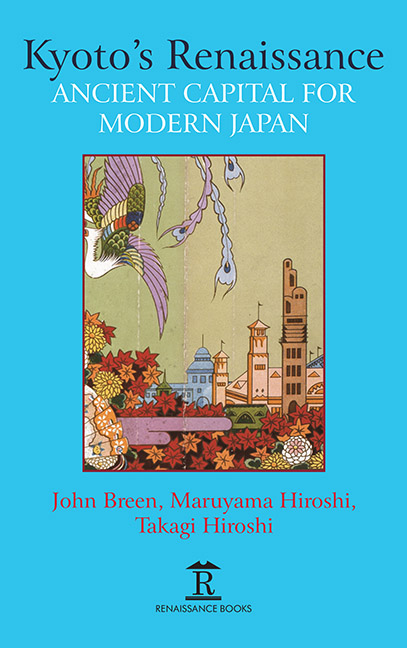Introduction: In Search of the Kyoto Modern
Published online by Cambridge University Press: 30 April 2022
Summary
MODERN KYOTO RESEARCH
JAPAN IS OFTEN cited as the one Asian nation to have modernized both successfully and swiftly in the nineteenth century. Modernization in this context refers to industrialization, and the rapid economic growth it brings. This narrative is dominant, for example, in the many commemorative events, lectures and exhibitions that are taking place at the time of writing to mark the 150th anniversary of the Meiji Restoration. Typically, sponsors, lecturers and curators locate the Meiji Restoration as the starting point of Japan's modernization process, before narrating tales of modern Japan's success. The somber historical truth is that the Meiji Restoration left in its wake political and socio-economic chaos.
The city of Kyoto, the spatial focus of this book, suffered grievous damage in the aftermath of the Meiji Restoration of 1868, and yet in the midst of adversity it underwent a dramatic transformation. After the emperor and his court uprooted and left for Edo (Tokyo) in 1869, even the Imperial Palace fell into disrepair. But then the city began a process of rapid modernization; it modernized faster, in fact, than any city in the land. At the same time, it set out to demonstrate that its thousandyear history as the country's imperial center was a legacy vital to the modern nation. It became a vibrant, modern “ancient capital.” Such was the trajectory of Meiji-period Kyoto's renaissance. The trajectory was also one of sustained resilience, a term that implies a system's capacity to function even as it is subject to environmental buffeting. There is no doubt that Kyoto was seriously buffeted, and no doubt that it proved resilient. Kyoto not only survived; it thrived in modern Japan. This book sets out to study the nature of Kyoto's modern experience.
Kyoto's thousand-year history began in 794 when it was founded as the imperial capital Heian. The city became the political, financial and cultural center of Japan. And so it remained for eight hundred years, until the creation of the Tokugawa shogunate in Edo in 1600. Japan's political center shifted east now to Edo, and the financial hub relocated west to Osaka, following the development of east-west water routes in the early seventeenth century. Kyoto meanwhile retained its status as Japan’s cultural center, on account of the imperial presence.
- Type
- Chapter
- Information
- Kyoto's RenaissanceAncient Capital for Modern Japan, pp. ix - xxxiiPublisher: Amsterdam University PressPrint publication year: 2020



